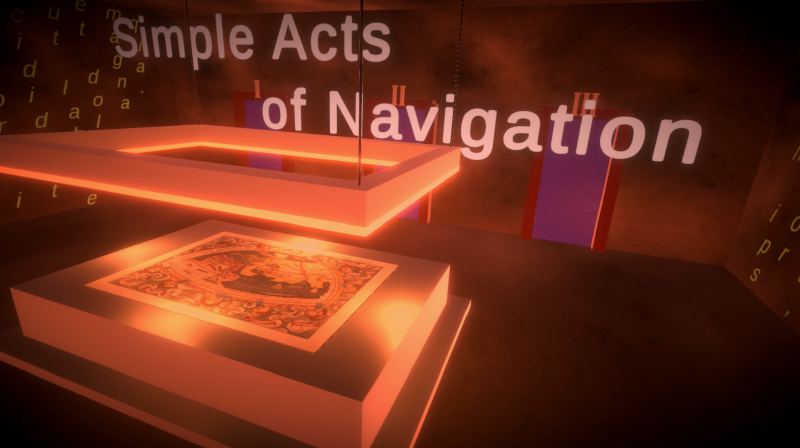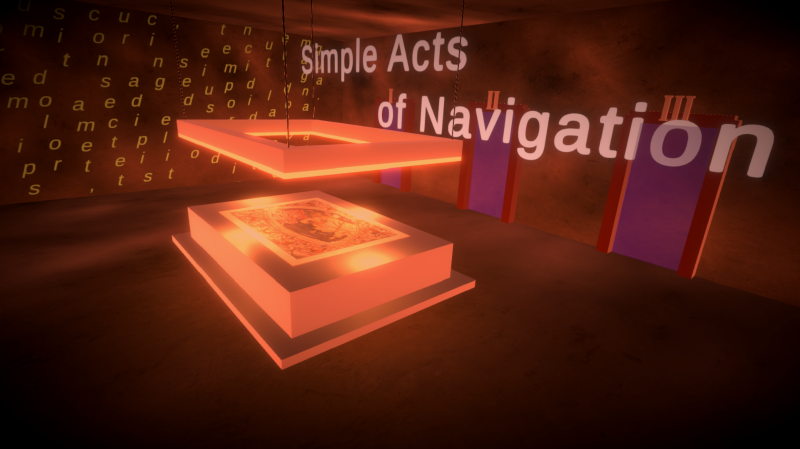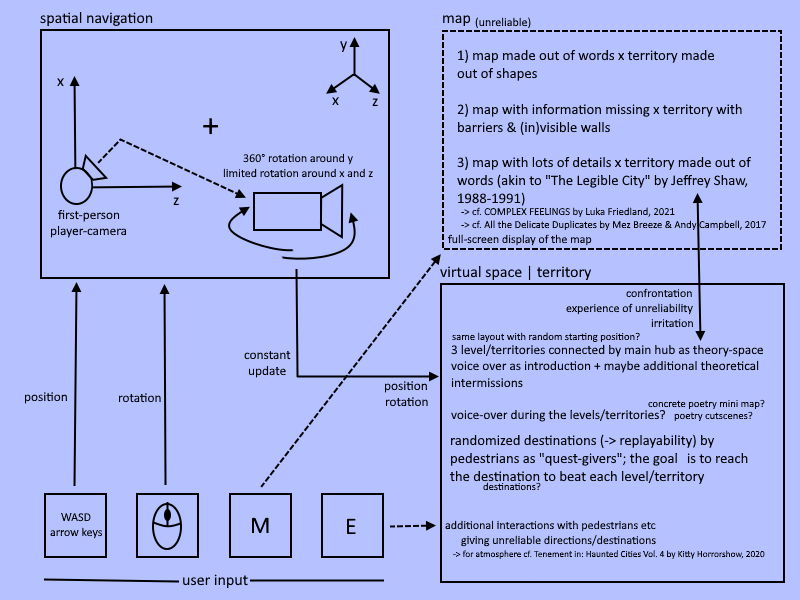GMU:Maps, Territories and Possibility Spaces/Luka Friedland: Difference between revisions
mNo edit summary |
mNo edit summary |
||
| Line 1: | Line 1: | ||
== '''Simple Acts of Navigation (WT)''' == | == '''Simple Acts of Navigation (WT)''' == | ||
''Simple Acts of Navigation'' (WT) is a digital game/interactive media artwork, in which the player is given a map and is tasked with reaching certain destinations in a virtual space, which comes in three different levels/test arrangements. The map, which is usually a reliable source of information within digital games, acts here as unreliable and confusion-invoking. ''Simple Acts of Navigation'' questions the dependency that especially contemporary Open World Games instill between player and map markers and searches for different approaches towards this relationship between map, territory and player. This digital game/interactive media artwork foregrounds the usually unquestioned mediality and artificiality of the map and highlights its flaws and its failures to represent space. | |||
| Line 7: | Line 7: | ||
[[Image:Simple_acts_of_navigation_work_in_progress_23.04.2023.png|800px]] | [[Image:Simple_acts_of_navigation_work_in_progress_23.04.2023.png|800px]] | ||
Revision as of 11:22, 8 May 2023
Simple Acts of Navigation (WT) is a digital game/interactive media artwork, in which the player is given a map and is tasked with reaching certain destinations in a virtual space, which comes in three different levels/test arrangements. The map, which is usually a reliable source of information within digital games, acts here as unreliable and confusion-invoking. Simple Acts of Navigation questions the dependency that especially contemporary Open World Games instill between player and map markers and searches for different approaches towards this relationship between map, territory and player. This digital game/interactive media artwork foregrounds the usually unquestioned mediality and artificiality of the map and highlights its flaws and its failures to represent space.
first prototype


